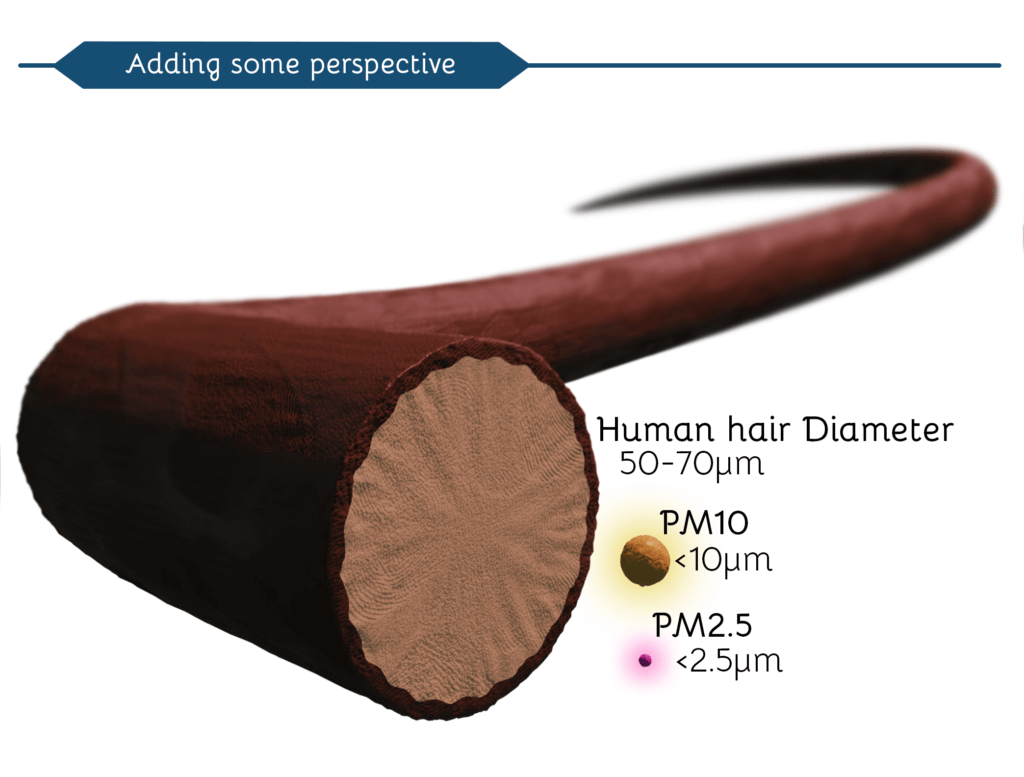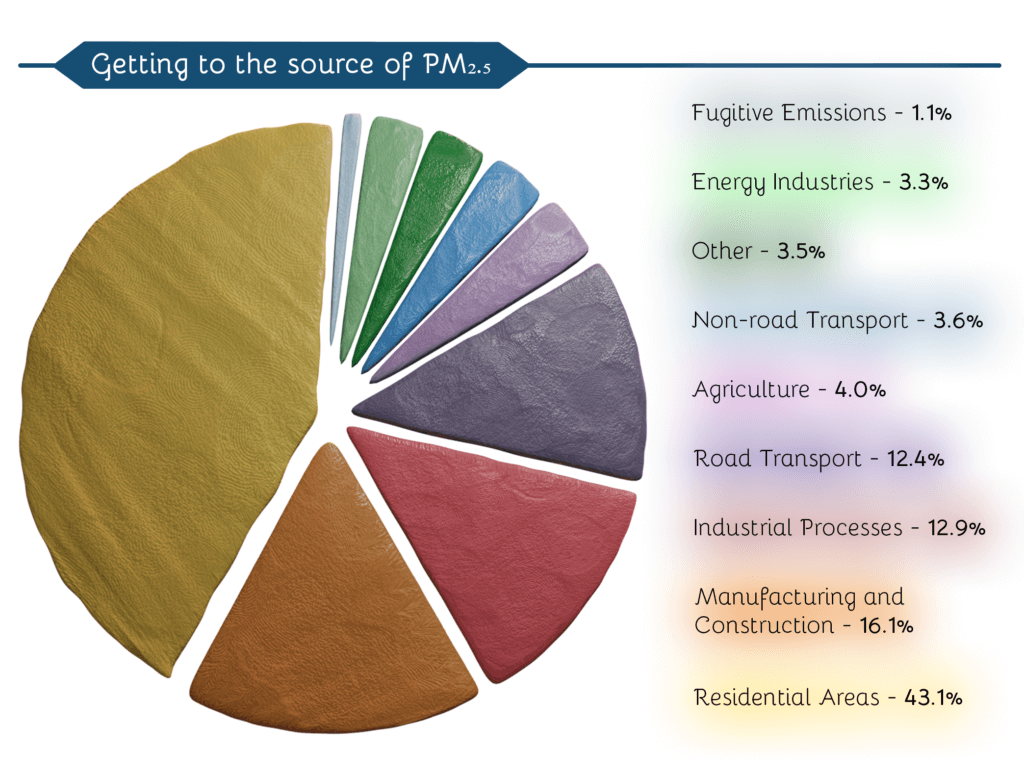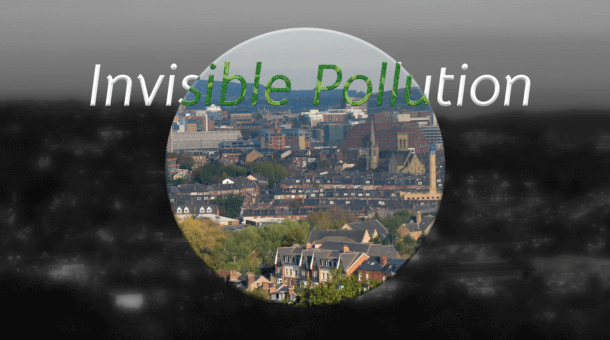The project
If someone handed you a glass of brown water, you wouldn’t drink it. Unfortunately, when it comes to the air we breathe, it’s not that simple. We only notice poor quality or polluted air when it starts to affect our health. But by that time it’s too late.
Invisible Pollution is a digital climate and pollution monitor that makes poor quality polluted air visible. Devised by masters student Damian Bemben (Computer Science), it’s the perfect example of how digital technology can make the world a better place.
Invisible Pollution focuses on air pollution in Sheffield by using various maps and data charts to show which areas are prone to the most pollution. The following exhibit is based on Sheffield pollution data, and is meant to make pollution a little bit clearer, and understandable. To view real-time pollution data, visit SheffSense.Uk
Working in conjunction with Urban Flows Observatory
What is pollution?
In simple words, pollution is the when the environment is contaminated by waste, harmful chemicals/particles. The two types of pollution particulates we will be concentrating on are PM2.5 and PM10. So, what exactly is PM? PM stands for “Particulate Matter” and it is a term used to describe solid and liquid particulates in the air. To group these particulates, we have a number after the “PM”. For example, particulates in the PM2.5 group must have a diameter below 2.5 µm.
PM₂.₅
Combustion Particles
Organic Compounds
Metals
PM₁₀
Dust
Pollen
Mould
Why are we so worried about PM₁₀ & PM₂.₅?
As you can see in the diagram below, PM10 and PM2.5 pollutants are extremely small meaning they can easily be inhaled and there could be some deposits throughout the airways. Due to these deposits, we usually see an increased number of hospital admissions for heart/lung issues where these pollutants are in abundance. Research shows older adults with chronic heart or lung disease are most likely to experience health problems when exposed to PM10 and PM2.5. However, this isn’t the only group of individuals who are at risk from these pollutants. Children and infants are also greatly at risk as they inhale more air per pound of body weight than adults do and spend more time outdoors whilst having a weaker immune system when compared to a healthy adult.
How polluted is Sheffield?
The following information was gathered based on August 12th, using particulate data from The Weather Company
PM10: 34.08 PM2.5: 21.25
What does that actually mean?
Weekly amount of cigarettes: 7
Time you could gain if we adhered to WHO pollution standards: 21 months.
How do we compare?
LONDON – PM10: 55.62 PM2.5: 38.06
STOCKHOLM – PM10: 11.51 PM2.5: 4.26
SANTIAGO (Chile) PM10: 69.46 PM2.5: 28.0
In order to view real-time sensor data, a time breakdown, as well as a map of the sensors around the Sheffield Area, go to SheffSense.Uk
Particle Simulation
This simulation represents the effects of pollution in people’s lifespan. The red cells represent people under the conditions selected, whereas them blue cells represent the lifespan of people if there was no pollution.
Try sliding PM10 and PM2 values, to see what effects pollution has on people. Try changing the PM values to match the ones in Sheffield, London and Stockholm, to see how residents are affected by pollution in their area
A full code breakdown can be found at the following
Thanks to
Megan Wright, Alvaro Rausell Guiard, Jonah Luckett, Morgan Davies, Harley Everett, Akshat Shah and Milad Laly for their work on this project and the SheffSense website.
Stephen A Jubb from the Urban Flows Observatory, Rohit Chakraborty for all his help, as well as Joe Heffer for helping set up the SheffSense site.
Paul Smith for all the help with Weather Company Data
– Damian Bemben
The podcast
The team
- Damian Bemben is a postgraduate student in the Department of Computer Science, to find out more about this work, visit his GitHub page
- Rohit Chakraborty is a Doctoral Researcher and Grantham Scholar, to find out more about his research visit his Grantham Centre page
- Steve Jubb is the Chief Technical Officer for the Urban Flows Observatory






